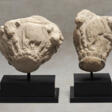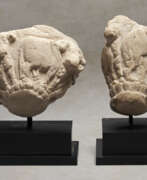Sumerian civilisation

Sumerian civilisation
The Sumerian civilization was an ancient Mesopotamian civilization that flourished in what is now southern Iraq, between the Tigris and Euphrates rivers. Renowned for their advancements in art, culture, and painting, this civilization is regarded as one of the earliest known in human history.
Sumerians pioneered in various fields, setting foundational stones for future civilizations. One of their remarkable contributions was in the realm of agriculture, where they introduced innovative farming techniques and tools, significantly enhancing productivity. They were also skilled in textile production, being the first to organize large-scale wool weaving. This foresight in manufacturing laid the groundwork for future industrial endeavors.
Their architectural prowess was evident in their unique approach to building. Due to a scarcity of stones and timber, Sumerians ingeniously developed clay brick molds, enabling them to construct larger cities and temples, a method that may seem less durable but was revolutionary for its time.
Artistically, the Sumerians were ahead of their curve, utilizing copper not just for practical items like tools and weapons but also in creating intricate art pieces. The use of copper in artistry brought a new dimension to their cultural expression.
In science and mathematics, the Sumerians were trailblazers. They developed a sophisticated numbering system based on units of 60, a concept that influences our time measurement even today. Their keen understanding of mathematics also played a crucial role in their architectural and hydraulic engineering feats, including the development of irrigation systems that transformed agricultural practices.
Culturally, the Sumerians were rich in literature and music. They left behind a plethora of written records, but they are especially remembered for their epic poetry. Their narratives and hymns influenced later civilizations and even find echoes in the Bible. The Epic of Gilgamesh, a masterpiece from this era, is not only a significant literary work but also provides insights into the Sumerian worldview and values.
Moreover, the Sumerian civilization was marked by its complex city-states, each with its own ruler and patron deity, showcasing a unique blend of governance and religion. This integration of the divine in their everyday life and governance was a distinctive feature of their culture.
Art collectors and antiquities experts today can still marvel at Sumerian contributions in museums worldwide. Their artifacts, ranging from cuneiform tablets to sculptures and copper artworks, offer a glimpse into a civilization that was advanced in its time and left a lasting impact on human history.
For enthusiasts of art and antiquities, staying informed about the latest discoveries and auction events related to the Sumerian civilization is essential. Sign up for our updates to remain connected to the world of ancient art and culture, specifically focusing on the remarkable Sumerian civilization.
| Country: | Asia, Iraq |
|---|---|
| Start of the period: | 4500 BC |
| End of the period: | 1900 BC |







